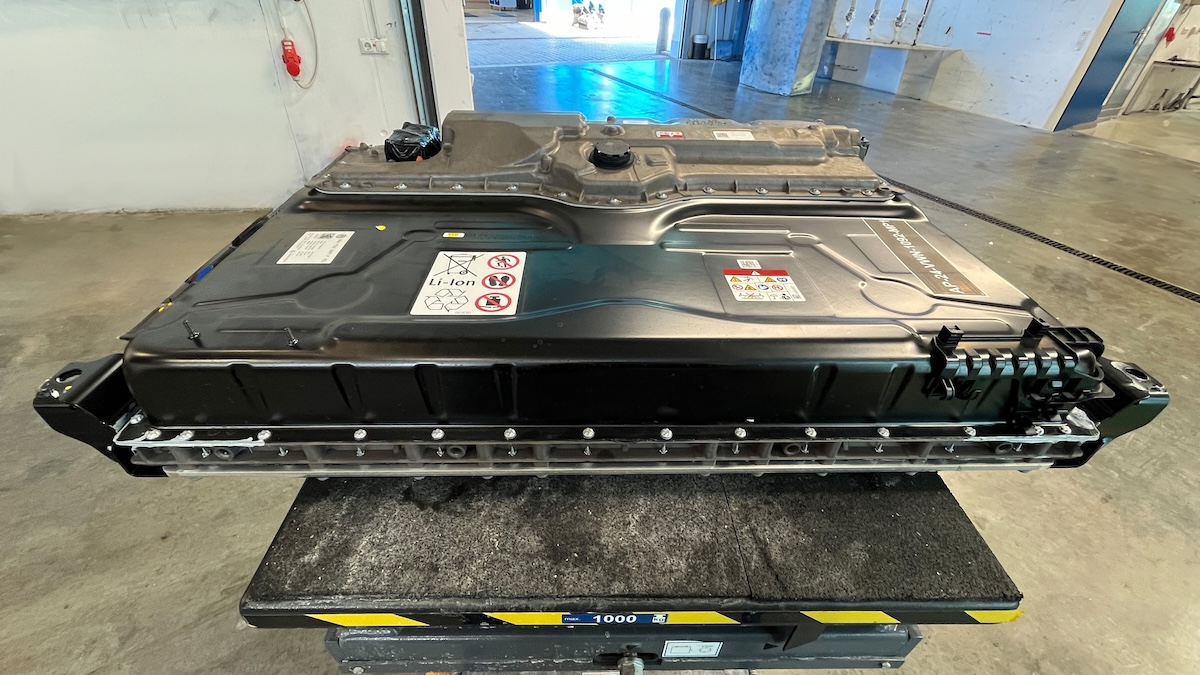The article ADAC study: This is how long the battery of plug-in hybrids lasts first appeared in the online magazine BASIC thinking. With our newsletter UPDATE you can start the day well informed every morning.

How long does a plug-in hybrid battery last? In a current study, the ADAC shows how much performance the drive batteries of hybrid electric vehicles lose over the course of their service life.
For many drivers, plug-in hybrids are the ideal introduction to electromobility. They offer the possibility of covering short distances purely electrically and without emissions, while the combustion engine reduces range anxiety on long journeys.
But especially when buying used cars, those interested are concerned with the question: How quickly does the plug-in hybrid battery age?
ADAC examines the lifespan of plug-in hybrid batteries
One current study by the ADAC provides answers to this. The mobility club evaluated around 28,500 battery health measurement results, the so-called State of Health (SoH), from cars from six different manufacturers. This measurement indicates how much of a battery’s original capacity is still available.
The result: In principle, it can be assumed that in the majority of the vehicles evaluated, the drive battery will last for the average vehicle life.
Nevertheless, the data shows that the aging of batteries varies greatly depending on the manufacturer and the proportion of electric driving. In addition, a higher proportion of electric driving means more charging cycles. On average, this leads to greater degradation of the battery.
Battery aging by manufacturer
Although the ADAC study largely gives the all-clear, the differences between models from different manufacturers and with different usage profiles are still significant. The automobile club published one about this corresponding graphic and summarizes:
When looking at the brand, Mercedes-Benz models show overall very stable battery performance up to 200,000 kilometers. It’s different with Mitsubishi, whose PHEVs show clear degradation even at low mileage, but this stabilizes somewhat over the course of their life.
The degradation in vehicles from the Volkswagen Group and Volvo remains inconspicuous even with higher electric driving proportions. BMW models show a visible spread across the entire field depending on electrical usage. In Ford models, the battery capacity decreases noticeably early, regardless of the user group. However, predictions about the condition at higher mileages are not possible due to the number of tests.
Battery check for plug-in hybrids: Buyers should pay attention to this
Due to the range in the study results, the ADAC recommends having a battery check carried out before purchasing used plug-in hybrids. Based on experience, the experts recommend the following SoH values:
- at 50,000 km at least 92 percent
- at least 88 percent over 100,000 km
- at 150,000 km at least 84 percent
- at 200,000 km at least 80 percent
If the value is noticeably lower, this could be an indication of an excessively aged battery or defective battery cells. The cost of replacing a battery can quickly exceed the value of the entire used car.
When buying a used car, it is also important to make sure that you have a complete maintenance booklet and timely maintenance so that the guarantee still applies years later in the event of an emergency.
Battery care tips
To maximize the life of the battery in a plug-in hybrid, experts recommend avoiding extreme charging. A charge level between 20 and 80 percent is considered particularly gentle on the battery.
Anticipatory and consistent driving also increases the electric range and protects the battery. Frequent rapid acceleration or braking puts a strain on the battery and increases consumption.
The ADAC also advises buyers who already know that they will cover as many distances as possible electrically to consider a purely electric car.
The experiences from the ADAC endurance tests show that many modern electric cars are fully suitable for everyday use. The larger batteries go through fewer charging cycles. As a result, they can usually cope with high driving performance.
Also interesting:
- LFP battery: Renault relies on a new cheap battery
- Battery revolution? Tin foam reduces charging stress of batteries
- Plug-in hybrids: Up to five times more CO2 than specified
- Automobile association demands: compulsory charging for plug-in hybrids
The article ADAC study: This is how long the battery of plug-in hybrids lasts appeared first on BASIC thinking. Follow us too Google News and Flipboard or subscribe to our newsletter UPDATE.
As a Tech Industry expert, I find the ADAC study on the longevity of plug-in hybrid batteries to be quite informative and important for consumers considering purchasing these vehicles. The study provides valuable data on the average lifespan of these batteries, which can help potential buyers make informed decisions about their investment in a plug-in hybrid.
The findings of the study can also help manufacturers improve the design and quality of their batteries to enhance durability and longevity. This is crucial as the demand for electric and hybrid vehicles continues to rise, and consumers expect their vehicles to last for a reasonable amount of time.
Overall, the ADAC study serves as a valuable resource for both consumers and manufacturers in the tech industry, providing insights into the real-world performance and longevity of plug-in hybrid batteries. It is essential for the industry to continue conducting such studies to ensure the development of reliable and durable battery technology in the future.
Credits